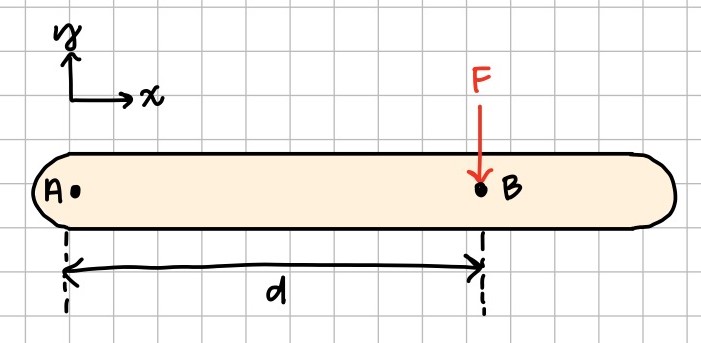Moments
A moment is a force applied at a distance from a point, which causes rotation about that point. The distance that the force is applied from is called the moment arm.
Moments as scalars
Moments can be written as scalar quantities, where Scalar Moment

The moment about point A is dependent on how much of the force \( F \) is perpendicular to the moment arm \( d \) .

Positive and negative moment conventions.
Moments as vectors
Moments can also be written as vector quantities, where the moment about point A is the cross product of the moment arm, \( r \) and the force \( F \). Vector Moment
Moment Magnitude
Couple moment
A couple moment is a set of two equal and opposite forces with parallel lines of action that produce a moment. The resulting moment from a force couple can be written as Moment of a force couple

A couple moment